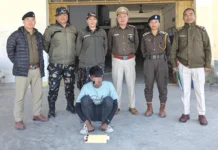Monday Musing
[ M Doley ]
Hydropower dams look fine and great on paper. Unlike fossil fuel, hydropower doesn’t pollute the atmosphere. It is a clean source of energy. Apart from power generation, dams play a significant role in mitigating floods. But the ugly side of the shiny picture is that large dams can cause unthinkable disasters.
The poor and rural populations, farmers and indigenous tribal people suffer maximum from the adverse impacts caused by large dams. These groups of powerless people seldom have equal human rights. Their concerns are often overlooked or not taken into consideration by the dam builders and owners.
The voices of the people and the organisations who speak for them are suppressed through various means by the people at the helm of affairs. These types of incidents are also happening in Arunachal Pradesh. Even a UN body had expressed concern over the detention of an anti-dam activist by the police in Arunachal last year and had sought a reply from India in this regard.
Construction of large dams results in submergence of homes and land and displacement of people and communities. Dams kill forests, and destroy the surrounding ecosystem and environment. The affected people have to move out from their places and give up their ancestral lands forever. Once displaced, their lives will never be the same again.
Large dams reduce groundwater levels, worsen water quality in rivers and impede movement of aquatic animals, including fishes. As spawning and rearing of fishes take place in different parts of the river, preventing fishes from their periodic natural migration/movement can reduce their populations, and even cause extinction in the long run.
Further, ground-shaking from earthquakes can collapse a dam, resulting in sudden release of a large amount of water, imposing risks on human lives and properties downstream.
In India, there are 224 dams, which are over 100 years old. These ageing dams are also posing a threat to the lives of people as these century-old structures may collapse anytime. The government, however, has enacted an Act to address the challenges posed by ageing dams and to prevent disasters arising from dam failures.
The government must not impose such huge risks on people forcefully by constructing mega dams without their consent. They have the right to live. The people are now much more aware about the negative impacts of mega dams than ever before. The government should keep its words that no hydro project, including the proposed SUMP, will be built if the people don’t want them.
The authorities should also keep in mind that lakhs of people displaced by large dams in India are still coping with an uncertain future.





